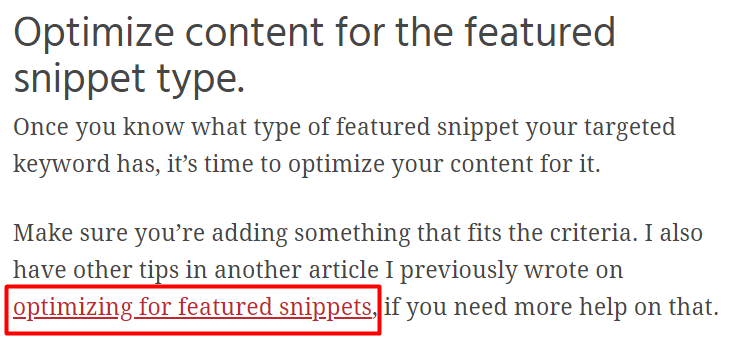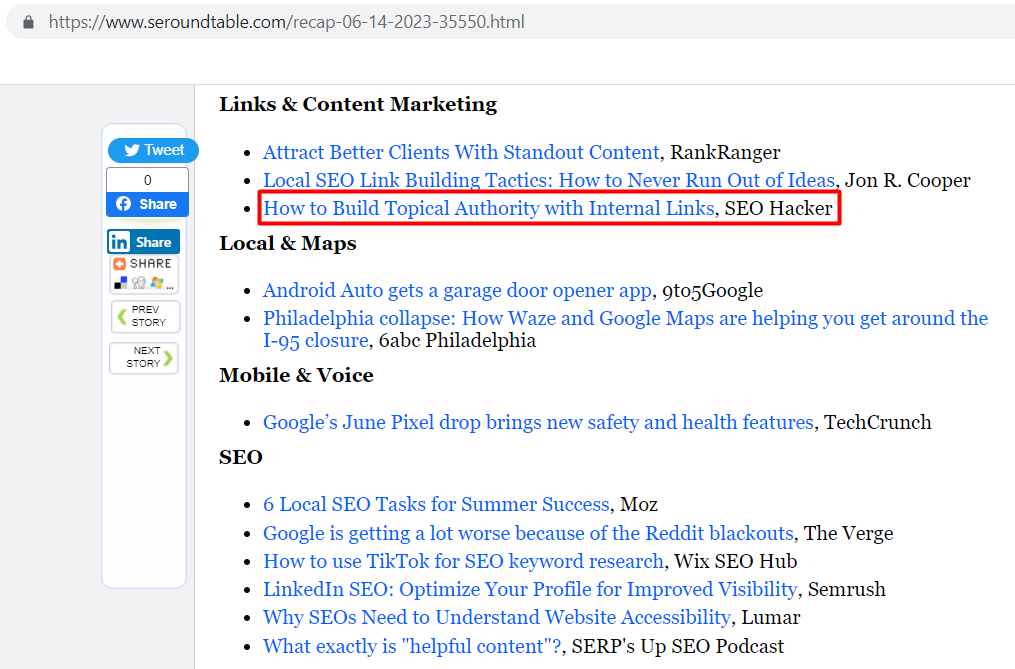SEO
Why is High-Quality Link Juice Essential for Backlinks?

“Link juice” is slang in the search engine optimization (SEO) world for how authority and value we get from any external link (also known as backlinks) pointing to our websites. They are essential to ranking your website since they have an impact on your visibility and reach on search engine results pages (SERPs).
Understanding what affects how much link juice you get from every backlink is crucial—this understanding will help you get the most link juice from the least amount of effort.
In this article, we’ll go in-depth on how to get high-quality link juice for the most important pages on your website.
What Determines Link Juice?
A website effectively transfers some of its authority, trustworthiness, and ranking power to the connected page when it connects to another one. Search engines use this flow of link equity, also known as link juice, to evaluate the significance and relevance of a webpage.
In short: the more links your pages get, the more Google thinks your page is valuable and worth promoting.
In simpler terms, Google sees any link-back to your website as a vote of confidence. It’s as if other websites are saying, “Hey, this page is pretty informative and useful. Users will benefit from seeing this page.”
But not all links are made the same. If you want links that provide high-quality juice, then you have to know where it comes from.
Link Relevance
Link relevance is a key element in assessing links. Backlinks that are coming from websites that are in the same industry as yours (or are in some way related to what your website provides) are considered more valuable than any other random website link.
The more relevant they are, the more Google is pushed to acknowledge your website’s content is reliable and worthwhile.
So, it is essential to concentrate on building links from sources that are, in some way, relevant to the pages you want to boost.
You can determine the link’s relevance by the website’s industry, of course. But aside from that, you should look at their domain authority.
Link-building efforts reap the most rewards when they come from a website that has a high domain authority.

We use tools like Mozbar from Moz and Backlink profile from Ahrefs to quickly get the domain and page authority of websites. These also show us other backlink data we need to consider in our link-building strategy.

I highly recommend focusing your efforts on websites that have a domain authority of at least 25. Anything less than that won’t give enough link juice, in my experience. The more authoritative the other website is, the more links built will raise the authority of your website.
Anchor Text
Anchor text is the text that’s clickable and highlighted when you create a hyperlink. The anchor text you use for your links gives context regarding the linked page to both users and search engines.

Striking a balance between optimization and naturalness is crucial, too, when it comes to anchor text. You can learn how to do that in my guide on how to effectively use anchor text for SEO.
But to summarize my points from that guide: the anchor text you use needs to give a crystal-clear explanation of what people will find when they click on your link.
Descriptive and keyword-rich anchor text would show search engines that the information is very, very important to the given topic. But of course, the anchor text you use and the page you’re linking to have to be related.
For example, if I wanted to make a guest post on a gardening website, and link back to my page on organic gardening, I can use anchor text like “best organic gardening tips,” or “organic gardening supplies,” depending on what my guest post is about, and what content my page has.
However, try to avoid over-optimized anchor text. I don’t recommend keyword stuffing, or being repetitive in your anchor text. Otherwise, it raises red flags with Google—and puts you at risk for penalization.
Instead, put your focus on making anchor text that offers a seamless and user-friendly experience.
Link Quantity & Quality
When it comes to link building, it’s quality over quantity. Just one backlink from a trustworthy, high domain authority site within your industry will give your website more link juice than 10 spammy backlinks from random websites.
Take this backlink one of our recent articles got from SERoundtable, for example. This provides a ton of link juice.

Start by locating reputable websites in your niche with high domain authority and a proven track record. The next step is outreach. Approach them with collaborative efforts like guest blogging, expert interviews, or featured pieces to build connections from these sites.
That said, the quantity of backlinks does have some significance in the eyes of Google. I just don’t recommend focusing on quantity alone, as it does not always benefit your page rankings.
But when it comes down to it, you have to consider: would it be more cost-efficient to focus your outreach towards 10 websites with good domain authority, which are more likely to respond positively—or spend weeks trying to contact a high domain authority website just for a slight chance at one or two backlinks?
You need to be smart with how you approach this. Focus on a balance between quantity and quality to get the best possible ROI. If possible, I recommend hitting a varied backlink profile. In my experience, it’s the most natural-looking to Google and still boosts your rankings.
Lastly, you should always maintain regular monitoring and analysis of the links that are pointing toward your website. This is essential in helping you spot any spammy or low-quality links, which you can quickly disavow before they harm your rankings.
Why is High-Quality Link Juice Essential?
On-page and technical SEO is foundational to your page’s performance—but off-page SEO (a.k.a, your backlinks) is what sets your page apart from the thousands of other similarly-optimized pages out there. That’s why getting high-quality backlinks to gain the most link juice possible for your pages is essential.
Once you get that, it provides a ton of benefits SEO-wise, such as:
Improved Search Engine Rankings
No matter what industry you’re in, or niche you’re targeting, there will always be other websites competing for the same keywords.
If every page competing for the same keyword had all things equal in terms of site speed and usability, content, and on-page optimizations, what would make Google consider your page to be better than the rest?
The answer is your backlinks. It’s the one way you can be competitive in your SEO. The more backlinks that give great link juice to your pages, the more likely they’re going to be ranking high on the SERPs.
Remember that several factors go into your website’s rank—link juice is just one piece of the puzzle. But it is a very important piece you should not forget.
Increased Organic Traffic
With improved rankings, increased organic traffic tends to follow. This is expected because a majority of people only really look at the first page of the SERPs—maybe the second page, sometimes. So higher rankings equals higher chances that people see your stuff.
But aside from that, good backlinks also serve as another funnel for traffic toward your website. For example, if an article on say, Healthline, links to one of your articles, or links your supplements or other health-related products that you sell, you can bet that many of their readers will click on that link.
High-quality backlinks overall increase the likelihood that visitors will explore your website, read your content, and engage with your business.
Faster Indexing and Crawling
The visibility and availability of your pages in SERPs are determined by the crawling and indexing activities of search engine crawlers (like Google’s Googlebot).
You can improve how quickly your new pages are indexed, and even how frequently your existing pages are crawled by continuously building links from reputable and authoritative websites.
Crawlers look at all of the content on each page, including the links in them, and where they lead to. So if many websites are pointing towards your pages, then these pages are more likely to start appearing in search results substantially faster than if there were no links at all.
It’s important to keep in mind that crawlers will scan and index your content more frequently if they keep seeing other websites and pages linking back to you.
How to Get High Quality Link Juice
It all comes down to the quality of the external links your website has. You can get high-quality link juice if you focus on these three things: your content, how your content is presented, and your outreach strategy.
Content is Key
Focus on producing link-worthy content as the cornerstone of your link-building strategy. The better your content is, the more likely people will read it—and reference it in their writing.
To make this happen, you need to publish educational, worthwhile, and captivating material that appeals to and answers the needs of your audience.
Google themselves even makes it a point to only reward content that they consider helpful and valuable to users, which I and my team make it a point to do. I covered how to rank for Google’s Helpful Content update in a different guide if you’re interested in the strategy I use for my articles.
Incorporate Different Formats
There are now a bunch of other materials you can use to pad your articles, such as photos, infographics, report snapshots, videos, and more.
Consider adding these visual elements in your posts when you can to grab your readers’ attention, and make your pages more visually appealing.
Do what you can to make your content more engaging. The more engaging it is, the more likely users will read through the whole thing, and potentially link your page to their content or posts.
Build Connections with Webmasters
I mentioned this point earlier, but I have to emphasize how important it is to do your outreach strategies right and build good connections with other webmasters. I have four backlink outreach strategies that my team uses in our work that you can try in your niche.
Just as getting external links is important for your SEO, it’s important for others’ SEO as well. Google rewards articles and pages that contain external links, they may help search engines understand its topic and niche. Plus, they are valuable to users as they offer more information and resources.
So reaching out to other industry leaders and reliable websites can result in a win-win relationship for you both. You get external links, they improve their page’s quality and user experience.
Key Takeaway
For link building to be effective, high-quality link juice is essential. To generate that almighty link juice for your site, keep the strategies I just shared in mind. With the right balance and effort, you can get more and more link equity to boost the performance of your website.
SEO
WordPress Insiders Discuss WordPress Stagnation

A recent webinar featuring WordPress executives from Automattic and Elementor, along with developers and Joost de Valk, discussed the stagnation in WordPress growth, exploring the causes and potential solutions.
Stagnation Was The Webinar Topic
The webinar, “Is WordPress’ Market share Declining? And What Should Product Businesses Do About it?” was a frank discussion about what can be done to increase the market share of new users that are choosing a web publishing platform.
Yet something that came up is that there are some areas that WordPress is doing exceptionally well so it’s not all doom and gloom. As will be seen later on, the fact that the WordPress core isn’t progressing in terms of specific technological adoption isn’t necessarily a sign that WordPress is falling behind, it’s actually a feature.
Yet there is a stagnation as mentioned at the 17:07 minute mark:
“…Basically you’re saying it’s not necessarily declining, but it’s not increasing and the energy is lagging. “
The response to the above statement acknowledged that while there are areas of growth like in the education and government sectors, the rest was “up for grabs.”
Joost de Valk spoke directly and unambiguously acknowledged the stagnation at the 18:09 minute mark:
“I agree with Noel. I think it’s stagnant.”
That said, Joost also saw opportunities with ecommerce, with the performance of WooCommerce. WooCommerce, by the way, outperformed WordPress as a whole with a 6.80% year over year growth rate, so there’s a good reason that Joost was optimistic of the ecommerce sector.
A general sense that WordPress was entering a stall however was not in dispute, as shown in remarks at the 31:45 minute mark:
“… the WordPress product market share is not decreasing, but it is stagnating…”
Facing Reality Is Productive
Humans have two ways to deal with a problem:
- Acknowledge the problem and seek solutions
- Pretend it’s not there and proceed as if everything is okay
WordPress is a publishing platform that’s loved around the world and has literally created countless jobs, careers, powered online commerce as well as helped establish new industries in developing applications that extend WordPress.
Many people have a stake in WordPress’ continued survival so any talk about WordPress entering a stall and descent phase like an airplane that reached the maximum altitude is frightening and some people would prefer to shout it down to make it go away.
Acknowledging facts and not brushing them aside is what this webinar achieved as a step toward identifying solutions. Everyone in the discussion has a stake in the continued growth of WordPress and their goal was to put it out there for the community to also get involved.
The live webinar featured:
- Miriam Schwab, Elementor’s Head of WP Relations
- Rich Tabor, Automattic Product Manager
- Joost de Valk, founder of Yoast SEO
- Co-hosts Matt Cromwell and Amber Hinds, both members of the WordPress developer community moderated the discussion.
WordPress Market Share Stagnation
The webinar acknowledged that WordPress market share, the percentage of websites online that use WordPress, was stagnating. Stagnation is a state at which something is neither moving forward nor backwards, it is simply stuck at an in between point. And that’s what was openly acknowledged and the main point of the discussion was understanding the reasons why and what could be done about it.
Statistics gathered by the HTTPArchive and published on Joost de Valk’s blog show that WordPress experienced a year over year growth of 1.85%, having spent the year growing and contracting its market share. For example, over the latest month over month period the market share dropped by -0.28%.
Crowing about the WordPress 1.85% growth rate as evidence that everything is fine is to ignore that a large percentage of new businesses and websites coming online are increasingly going to other platforms, with year over year growth rates of other platforms outpacing the rate of growth of WordPress.
Out of the top 10 Content Management Systems, only six experienced year over year (YoY) growth.
CMS YoY Growth
- Webflow: 25.00%
- Shopify: 15.61%
- Wix: 10.71%
- Squarespace: 9.04%
- Duda: 8.89%
- WordPress: 1.85%
Why Stagnation Is A Problem
An important point made in the webinar is that stagnation can have a negative trickle-down effect on the business ecosystem by reducing growth opportunities and customer acquisition. If fewer of the new businesses coming online are opting in for WordPress are clients that will never come looking for a theme, plugin, development or SEO service.
It was noted at the 4:18 minute mark by Joost de Valk:
“…when you’re investing and when you’re building a product in the WordPress space, the market share or whether WordPress is growing or not has a deep impact on how easy it is to well to get people to, to buy the software that you want to sell them.”
Perception Of Innovation
One of the potential reasons for the struggle to achieve significant growth is the perception of a lack of innovation, pointed out at the 16:51 minute mark that there’s still no integration with popular technologies like Next JS, an open-source web development platform that is optimized for fast rollout of scalable and search-friendly websites.
It was observed at the 16:51 minute mark:
“…and still today we have no integration with next JS or anything like that…”
Someone else agreed but also expressed at the 41:52 minute mark, that the lack of innovation in the WordPress core can also be seen as a deliberate effort to make WordPress extensible so that if users find a gap a developer can step in and make a plugin to make WordPress be whatever users and developers want it to be.
“It’s not trying to be everything for everyone because it’s extensible. So if WordPress has a… let’s say a weakness for a particular segment or could be doing better in some way. Then you can come along and develop a plug in for it and that is one of the beautiful things about WordPress.”
Is Improved Marketing A Solution
One of the things that was identified as an area of improvement is marketing. They didn’t say it would solve all problems. It was simply noted that competitors are actively advertising and promoting but WordPress is by comparison not really proactively there. I think to extend that idea, which wasn’t expressed in the webinar, is to consider that if WordPress isn’t out there putting out a positive marketing message then the only thing consumers might be exposed to is the daily news of another vulnerability.
Someone commented in the 16:21 minute mark:
“I’m missing the excitement of WordPress and I’m not feeling that in the market. …I think a lot of that is around the product marketing and how we repackage WordPress for certain verticals because this one-size-fits-all means that in every single vertical we’re being displaced by campaigns that have paid or, you know, have received a a certain amount of funding and can go after us, right?”
This idea of marketing being a shortcoming of WordPress was raised earlier in the webinar at the 18:27 minute mark where it was acknowledged that growth was in some respects driven by the WordPress ecosystem with associated products like Elementor driving the growth in adoption of WordPress by new businesses.
They said:
“…the only logical conclusion is that the fact that marketing of WordPress itself is has actually always been a pain point, is now starting to actually hurt us.”
Future Of WordPress
This webinar is important because it features the voices of people who are actively involved at every level of WordPress, from development, marketing, accessibility, WordPress security, to plugin development. These are insiders with a deep interest in the continued evolution of WordPress as a viable platform for getting online.
The fact that they’re talking about the stagnation of WordPress should be of concern to everybody and that they are talking about solutions shows that the WordPress community is not in denial but is directly confronting situations, which is how a thriving ecosystem should be responding.
Watch the webinar:
Is WordPress’ Market share Declining? And What Should Product Businesses Do About it?
Featured Image by Shutterstock/Krakenimages.com
SEO
Google’s New Support For AVIF Images May Boost SEO

Google announced that images in the AVIF file format will now be eligible to be shown in Google Search and Google Images, including all platforms that surface Google Search data. AVIF will dramatically lower image sizes and improve Core Web Vitals scores, particularly Largest Contentful Paint.
How AVIF Can Improve SEO
Getting pages crawled and indexed are the first step of effective SEO. Anything that lowers file size and speeds up web page rendering will help search crawlers get to the content faster and improve the amount of pages crawled.
Google’s crawl budget documentation recommends increasing the speeds of page loading and rendering as a way to avoid receiving “Hostload exceeded” warnings.
It also says that faster loading times enables Googlebot to crawl more pages:
Improve your site’s crawl efficiency
Increase your page loading speed
Google’s crawling is limited by bandwidth, time, and availability of Googlebot instances. If your server responds to requests quicker, we might be able to crawl more pages on your site.
What Is AVIF?
AVIF (AVI Image File Format) is a next generation open source image file format that combines the best of JPEG, PNG, and GIF image file formats but in a more compressed format for smaller image files (by 50% for JPEG format).
AVIF supports transparency like PNG and photographic images like JPEG does but does but with a higher level of dynamic range, deeper blacks, and better compression (meaning smaller file sizes). AVIF even supports animation like GIF does.
AVIF Versus WebP
AVIF is generally a better file format than WebP in terms of smaller files size (compression) and image quality. WebP is better for lossless images, where maintaining high quality regardless of file size is more important. But for everyday web usage, AVIF is the better choice.
See also: 12 Important Image SEO Tips You Need To Know
Is AVIF Supported?
AVIF is currently supported by Chrome, Edge, Firefox, Opera, and Safari browsers. Not all content management systems support AVIF. However, both WordPress and Joomla support AVIF. In terms of CDN, Cloudflare also already supports AVIF.
I couldn’t at this time ascertain whether Bing supports AVIF files and will update this article once I find out.
Current website usage of AVIF stands at 0.2% but now that it’s available to surfaced in Google Search, expect that percentage to grow. AVIF images will probably become a standard image format because of its high compression will help sites perform far better than they currently do with JPEG and PNG formats.
Research conducted in July 2024 by Joost de Valk (founder of Yoast, ) discovered that social media platforms don’t all support AVIF files. He found that LinkedIn, Mastodon, Slack, and Twitter/X do not currently support AVIF but that Facebook, Pinterest, Threads and WhatsApp do support it.
AVIF Images Are Automatically Indexable By Google
According to Google’s announcement there is nothing special that needs to be done to make AVIF image files indexable.
“Over the recent years, AVIF has become one of the most commonly used image formats on the web. We’re happy to announce that AVIF is now a supported file type in Google Search, for Google Images as well as any place that uses images in Google Search. You don’t need to do anything special to have your AVIF files indexed by Google.”
Read Google’s announcement:
Supporting AVIF in Google Search
Featured Image by Shutterstock/Cast Of Thousands
SEO
CMOs Called Out For Reliance On AI Content For SEO

Eli Schwartz, Author of Product-Led SEO, started a discussion on LinkedIn about there being too many CMOs (Chief Marketing Officers) who believe that AI written content is an SEO strategy. He predicted that there will be reckoning on the way after their strategies end in failure.
This is what Eli had to say:
“Too many CMOs think that AI-written content is an SEO strategy that will replace actual SEO.
This mistake is going to lead to an explosion in demand for SEO strategists to help them fix their traffic when they find out they might have been wrong.”
Everyone in the discussion, which received 54 comments, strongly agreed with Eli, except for one guy.
What Is Google’s Policy On AI Generated Content?
Google’s policy hasn’t changed although they did update their guidance and spam policies on March 5, 2024 at the same time as the rollout of the March 2024 Core Algorithm Update. Many publishers who used AI to create content subsequently reported losing rankings.
Yet it’s not said that using AI is enough to merit poor rankings, it’s content that is created for ranking purposes.
Google wrote these guidelines specifically for autogenerated content, including AI generated content (Wayback machine copy dated March 6, 2024)
“Our long-standing spam policy has been that use of automation, including generative AI, is spam if the primary purpose is manipulating ranking in Search results. The updated policy is in the same spirit of our previous policy and based on the same principle. It’s been expanded to account for more sophisticated scaled content creation methods where it isn’t always clear whether low quality content was created purely through automation.
Our new policy is meant to help people focus more clearly on the idea that producing content at scale is abusive if done for the purpose of manipulating search rankings and that this applies whether automation or humans are involved.”
Many in Eli’s discussion were in agreement that reliance on AI by some organizations may come to haunt them, except for that one guy in the discussion
Read the discussion on LinkedIn:
Too many CMOs think that AI-written content is an SEO strategy that will replace actual SEO
Featured Image by Shutterstock/Cast Of Thousands
-

 SEO7 days ago
SEO7 days agoGoogle’s Revamped Documentation Shows 4 Reasons To Refresh Content
-
SEARCHENGINES5 days ago
Daily Search Forum Recap: August 26, 2024
-

 SEARCHENGINES7 days ago
SEARCHENGINES7 days agoGoogle Ranking Bug Fixed, August Core Update Swings, AI Overviews, Google Ads Bug & More
-

 WORDPRESS7 days ago
WORDPRESS7 days agoHow to Secure Your WordPress Store
-
SEARCHENGINES4 days ago
Daily Search Forum Recap: August 27, 2024
-

 AFFILIATE MARKETING7 days ago
AFFILIATE MARKETING7 days agoBusiness Owners are Batting 1,000 With This All-in-One Management Hub
-

 SEARCHENGINES6 days ago
SEARCHENGINES6 days agoGoogle Migrating All To Google Merchant Center Next By September
-

 WORDPRESS5 days ago
WORDPRESS5 days ago9 Best Elementor Alternatives 2024 (Faster Page Builders)














